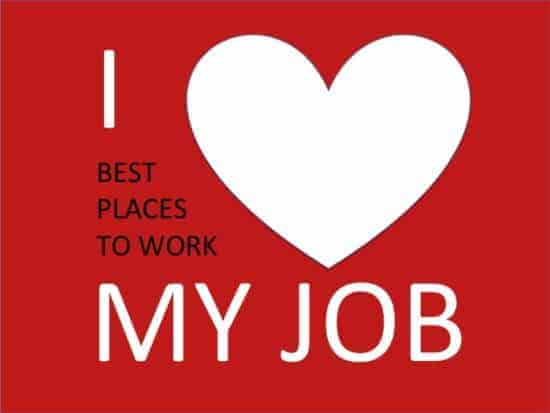
According to Forbes, the Best Places to Work offer outstanding work environments and company cultures that clearly demonstrates their mission, culture and values through strong communication with employees and job seekers*. Best places to work also focus on building a collaborative employee environment; they are dynamic with a fast pace of growth; and these organizations are constantly changing and thriving!
Management in “Best Places to Work” understand the importance of building strong connections with their employees and encouraging their employees to develop strong relationships with other members of the team. When there is constant change and uncertainty, which will always be the case for dynamic growing organizations, it is the “connections” and “relationships” that we have forged that will create stability as teams learn to lean on each other. One of the main reasons employees decide to stay within an organization is because of the relationships they have with their direct manager and also the enjoyment they get from working with people on their team. These employees are engaged because they care about the people they work with and they will decide to give 110% just because they want to help out!
How do we get this level of engagement and build this type of culture with such diversity in our workplaces? It’s not always easy days at the office when, in some cases, you have more than four generations in the workplace. Investing in understanding the diversity in your team and what motivates people will generate a healthy return on your investment as turnover levels will drop and engagement and productivity scores will increase. As we study the Millennials (generally those born between 1982 and 2004), who have become the largest generation in our workforce today, we realize that it’s not only flexible work arrangements that engage this group. It is an opportunity to give back to society as well as open and frequent communication by management that excites and engages the Millennials. This requires organizations to effectively communicate and live their mission, vision and values and the value proposition they offer employees. What do you do and how do you do it from an organization perspective? How important is giving back to the community and does your organization offer opportunities for employees to contribute to helping out in their community through volunteering on company time?
We also know that diversity in the workplace is having a huge impact on how organizations conduct performance reviews. The annual performance evaluation no longer works – it’s just not enough and most of our employees in the workforce today (certainly the Millennials) are not interested in waiting 6 months to a year for feedback. They want it weekly and timely – when situations warrant it. The feedback needs to be relevant and candid and we need to phase out old review processes that are time consuming and, in the eyes of many, a complete waste of time. This doesn’t mean that we stop giving feedback and reviewing the performance of our employees – it just means we do it differently. We set goals and discuss progress weekly over short meetings and during coffee or lunch. We check-in regularly and make the check-ins part of our new performance management processes.
Managing the constant change that comes with a growing dynamic organization and diversity within your team to develop relationships that provide employees with support and drive engagement is critical to becoming a best place to work. Contact Salopek & Associates if you would like to discuss how your organization and team can better manage and thrive amidst constant change, and become a best workplace for current and prospective employees.
Resources – *The Best Places to Work in 2016, Motivating Millennials Takes More than Flexible Work Policies

